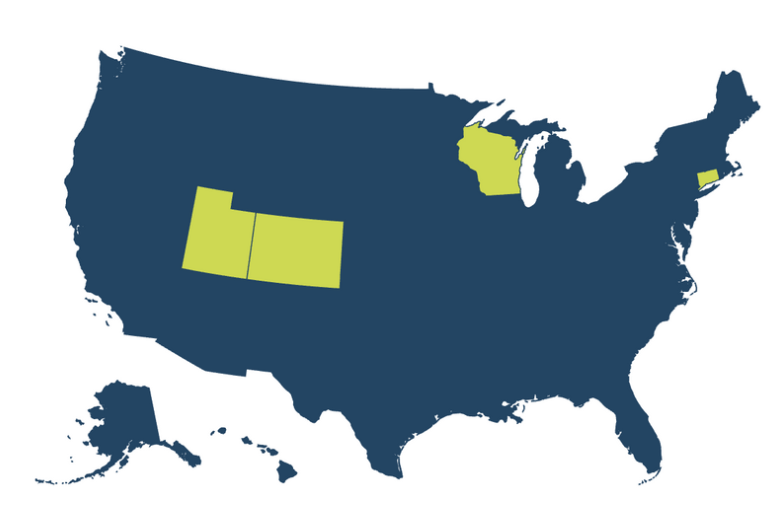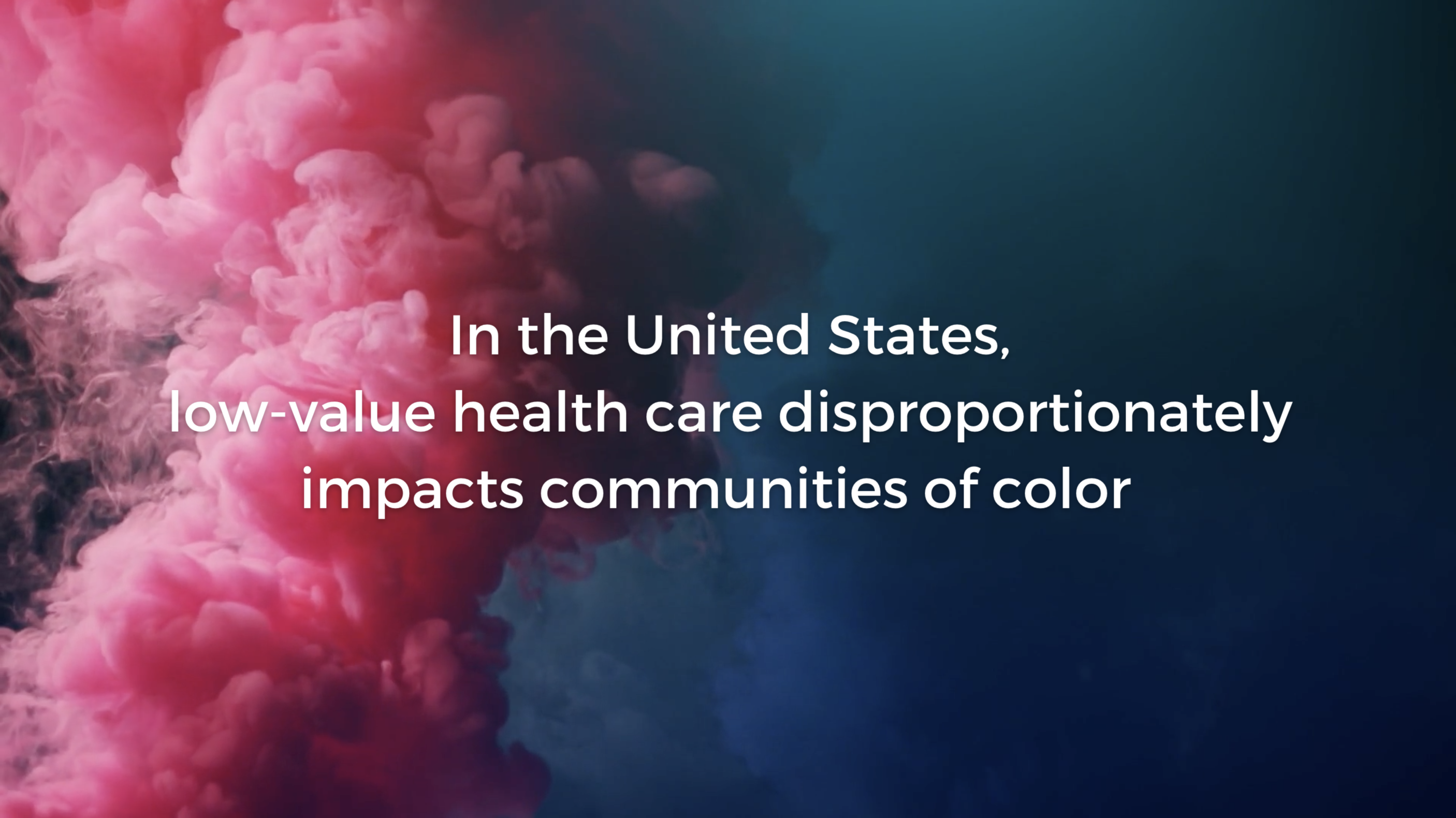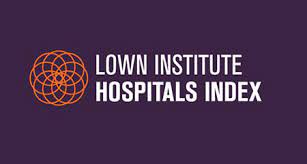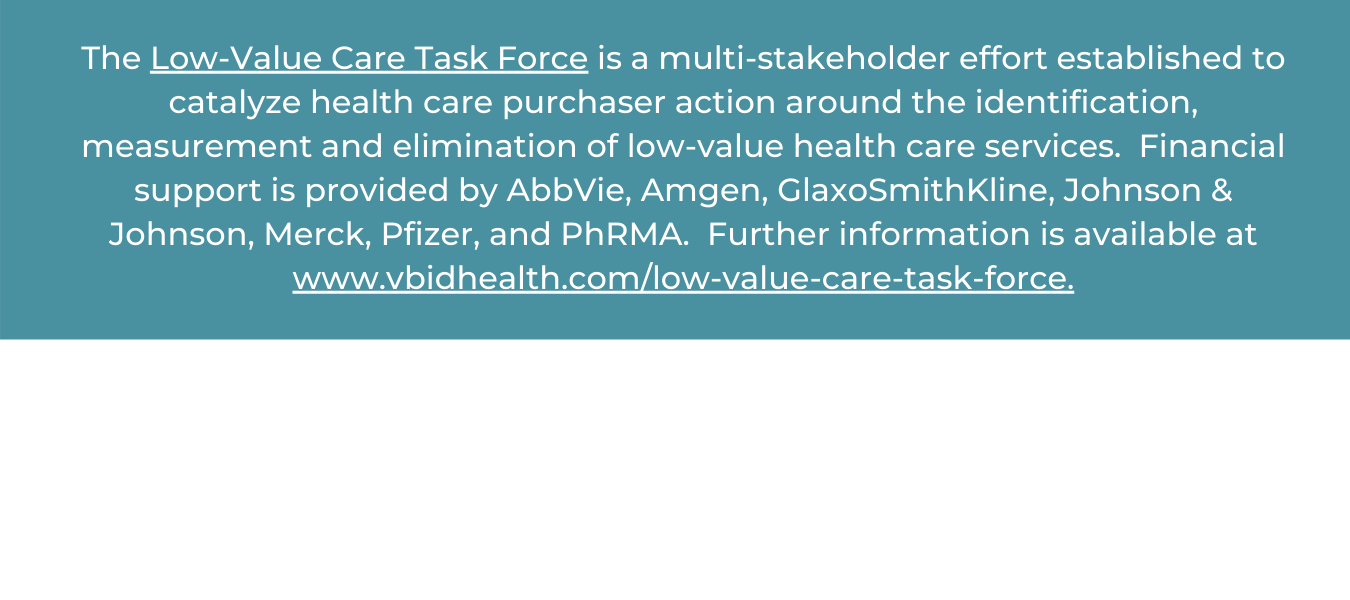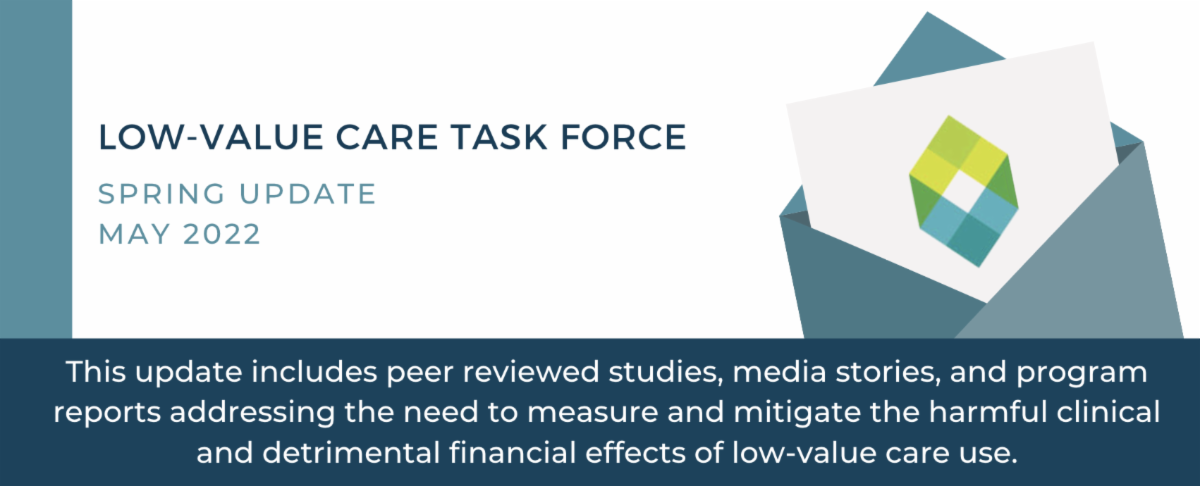
New Report: Utilization and Spending on Low-Value Medical Care Across Four States
A new VBID Health report analyzes data from all payer claims databases (APCDs) from four states – Colorado, Connecticut, Utah, and Wisconsin – to quantify the utilization and spending on 48 specific low-value services by commercial payers in 2019. Key findings:
- In 2019, the four states spent more than $630M on the 48 low-value services measured.
- In Colorado, Connecticut, and Utah, patients paid nearly $100M out-of-pocket on the 48 LVC services.
- A substantial proportion of LVC expenditures was concentrated in high-volume services and those frequently used in low-value clinical settings.
Video: Reducing Low-Value Care to Improve Health Equity
In the United States, low-value health care disproportionately impacts communities of color. By incorporating equity and the diverse needs of underserved communities in the definition of low-value care, we can encourage progress towards addressing health disparities. Watch our latest video here.
Changes in Use of Low-Value Services During the COVID-19 Pandemic
A study in the American Journal of Managed Care reported that early in the COVID-19 pandemic, the use of low-value care services declined at a rate similar to the use of high-value services. However, the rebound of low-value services lagged behind high-value care, suggesting a role for clinical value in decision making as we emerge from the pandemic.

